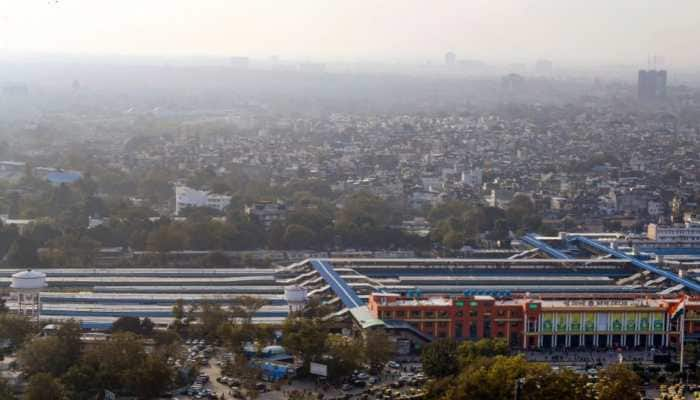Interim Budget 2019 today, sops for farmers and salaried class, cheap loans likely as Lok Sabha election nears
The NDA govt will present its Interim Budget 2019 on Friday amidst a lot of hopes and expectations from across the spectrum of society.
Trending Photos
)
NEW DELHI: Just a few months before the Lok Sabha election, the Bharatiya Janata Party-led National Democratic Alliance (NDA) government will present an Interim Budget on Friday amidst a lot of hopes and expectations from the common people as well as the industry.
The Budget for 2019, which is likely to be an interim one and the last financial exercise by the Prime Minister Narendra Modi government before the Lok Sabha election, will be presented in the Lok Sabha by Union Finance Minister Piyush Goyal on Friday at 11 AM.
While some relief in income tax exemption to the salaried and middle-class is expected, there is also hope that the Modi government may come out with some ‘concrete’ measures to combat the problem of unemployment in the country.
According to government sources, income tax concessions for individuals, a farm relief package, support for small businesses and possible populist spending measures may be part of the Interim Budget 2019 that Finance Minister will present on Friday.
READ: Interim Budget 2019: Here is what various sectors are expecting from government
This would be the BJP-led NDA government's last-ditch attempt to woo voters ahead of the general election.
Modi government's sixth and final budget before the poll due by May is likely to be either an Interim Budget or a Vote on Account.
READ: What is the difference between Interim Budget and Vote-on-account?
But, it is widely expected that Goyal may go beyond seeking Parliament nod for government expenditure for four months of next fiscal and announce sops to woo rural and urban middle-class voters, industry sources and experts say.
As per convention, the outgoing government only seeks parliamentary approval for limited period spending, leaving the full Budget presentation for the new regime.
Under pressure from a resurgent Congress, which is going all out to lure voters with the promise of debt waiver for farmers and a minimum income for the poor if voted to power, Goyal may announce some form of a direct transfer of cash to farmers.
Farm Loan Waiver
This may or may not replace subsidies that the farmer gets but will certainly be aimed at addressing rural distress, which was primarily blamed for BJP's defeat in recent assembly elections in key states.
The farm relief package may cost anywhere between Rs 70,000 crore to Rs 1 lakh crore to the exchequer, according to sources.
Goyal, who stepped in as the interim Finance Minister after Arun Jaitley had to fly to New York for medical treatment, is widely expected to raise income tax exemption thresholds.
Income Tax Sops For Salaried Class
Basic exemption limit may be raised from Rs 2.5 lakh to Rs 3 lakh for individuals of less than 60 years of age and from Rs 3 lakh to Rs 3.5 lakh for those aged 60 years or more but less than 80.
Women taxpayers may get a higher basic exemption of Rs 3.25 lakh or even at par with senior citizens, sources claimed.
An alternative to raising the exemption limit is to raise the 80C deduction to Rs 2 lakh from Rs 1.5 lakh to encourage taxpayers to save more for their future.
Considering delay in housing projects and also rising interest rates, deduction of interest amount on housing loan for a self-occupied house property may be enhanced to Rs 2.5 lakh from Rs 2 lakh.
The set-off cap of adjusting loss from house property against other heads of income may also be accordingly raised to Rs 2.5 lakh from Rs 2 lakh, according to sources.
The increase in personal income tax exemption limit is unlikely to meaningfully reduce collections unless the successive tax slabs are also changed.
Also being speculated are cheap loans for small businesses and increased rural spending.
For the farm sector, the possible options include direct transfer of money to farmers like in the Telangana model of Rythu Bandhu, interest-free crop loan for those farmers who pay on time and zero premium for insurance of food grain crops.
The measures, industry and informed sources say, could include those to create employment as the government faces a tag of giving a jobless high GDP growth.
READ: Sensex rallies over 660 points ahead of Interim Budget 2019
For investors, these sops may translate into another breach in the budget deficit target of 3.3 per cent of GDP for the current fiscal and a possible record borrowing in the coming financial year.
In 2018-19, the largest downside to revenues has been from the GST collections with the shortfall likely at around Rs 1.4 lakh crore.
Goyal may also look at higher interim dividend from RBI and deferring subsidy payouts on fertiliser as well as LPG and kerosene to provide funds for the populist schemes.
Credit rating agencies have warned that without bringing down other spendings, a higher farm subsidy bill will increase future fiscal deficits.
Sources said the Interim Budget would provide an opportunity for the government to outline its medium-term economic priorities, specifically with regards to improving farm/rural incomes.
It would be important to continue its focus on overall infrastructure expansion, especially as private sector investments remain tepid and a nascent recovery hinges on government spending.
There is also a talk of the government looking at the idea of a Quasi-Universal Basic Income Scheme (QUBI).
The concept of a Universal Basic Income (UBI) in the context of India was outlined in the Economic Survey 2016-17.
However, a UBI for the entire population (and even for the BPL population) will entail a prohibitively high fiscal outgo. In fact, without a commensurate reduction in various transfers (subsidies and social programmes), it might not be feasible to implement a UBI for the entire population.
However, the government could target the poorest of the poor (possibly 40 per cent of the BPL population) based on the 2011 census.
Some say a hypothetical Rs 700 to Rs 1,200 per month can be provided to the poorest of the population (around 12 crore people). This will entail an outgo of Rs 1 lakh crore or 0.5 per cent of the GDP.
(With Agency inputs)
Stay informed on all the latest news, real-time breaking news updates, and follow all the important headlines in india news and world News on Zee News.
Live Tv







)
)
)
)
)
)
)
)
)
)
